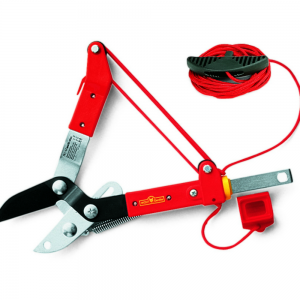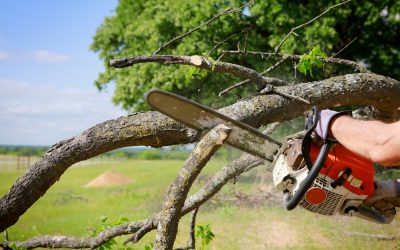Tree loppers are the longest type of pruning tool, and they are used to prune living or dead branches to form a tree or shrubbery into the proper form. There are two types of loppers:
* Bypass Loppers: The blades, like scissors, cross over each other. Usually, at least one of the blades is curved.
* Anvil Loppers: The blades meet in the middle and never cross over each other. The straight-edged blades merely close.
This article will discuss which loppers to use for certain jobs, as well as some general usage and safety precautions.
When to Use Anvil Tree Loppers
If you have an older tree with a lot of dead branches and shoots, you should use an anvil lopper. This type of tree lopper easily hack into branches that are as thick as 2 inches, making them ideal for thicker branches. Although they are recommended for dead branches, you can also use them to prune thicker live branches, just a slong as you use a bypass lopper to clean the cut afterwards to promote growth.
When to Use Bypass Tree Loppers
Bypass loppers offer a cleaner cut and finesse that makes them ideal for cutting live branches that are up to 1½ inches thick. The goal of pruning with a bypass lopper is to trim back a tree without damaging the life in its branches, and the curved blades make a cut that encourages growth in the right places.
General Safety Precautions for Tree Pruning
Always put your personal safety first when you are pruning your trees. Tree pruning involves a lot of time with your arms held up to reach branches, sometimes while standing on a ladder. OSHA advises anyone who is trimming a tree with a ladder to always have a spotter.
If you have electric power lines near the tree you need to prune, OSHA advises that you should let a professional arborist take care of the job for you. Any tree work that is within 10 feet of a powerline should be pruned by a professional. Even if your tree is safety distanced, you are still advised to maintain your clearance when moving and handling ladders and equipment.
Even when using tree loppers, you should wear PPE, personal protective equipment, like goggles, gloves, or (for larger branches) a hard-hat to avoid injury from falling tree debris. As a general rule for loppers, do not try to cut more than your tool’s capacity. Since most household loppers have a maximum branch capacity of 2 inches, so if your tree’s branches are thicker than that, you should consider hiring a professional.
Make Your Job Easier with WOLF Tree Loppers
WOLF tree loppers range in lengths from 21.5 inches long to a telescoping maximum of 35.5 inches. Choose a tool that is ergonomic, comfortable, and, above all, ready to meet the demands of the tasks. Visit Blue Stone Garden for an anvil lopper or bypass lopper today.




